J201 Transistor: JFET N-Channel, Pinout, Datasheet, Equivalent
JFET N-CH 40V 0.625W TO92
J201 is a JFET N-Channel Transistor. This article will unlock pinout, datasheet, equivalent and more details about J201. Welcome your RFQ!

Jfet vs Mosfet vs Bipoler In Single Transistor Boosters
J201 Description
J201 JFET N-Channel Transistor is designed primarily for low-level audio and general, purpose applications with high impedance signal sources.
J201 Pinout

J201 Pinout
J201 CAD Model
Symbol

J201 Symbol
Footprint
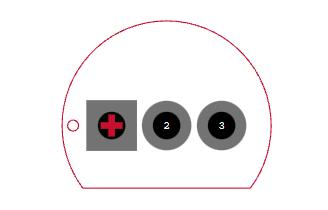
J201 Footprint
3D Model
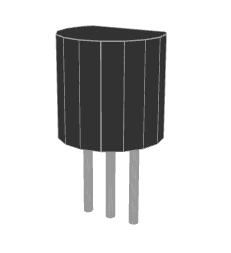
J201 3D Model
J201 Feature
Type Designator: J201
Type of Transistor: JFET
Type of Control Channel: N-Channel
Package: TO-92
Low Cutoff Voltage
High Input Impedance
Very Low Noise
J201 Application
High-Gain, Low-Noise Amplifiers
Low-Current, Low-Voltage
Battery-Powered Amplifiers
Infrared Detector Amplifiers
Ultra-High Input
J201 Equivalent
The equivalent for J201:
2SJ201
LJ2015-52
MMBFJ201
CJ201NL
Specifications
- TypeParameter
- Mounting Type
The "Mounting Type" in electronic components refers to the method used to attach or connect a component to a circuit board or other substrate, such as through-hole, surface-mount, or panel mount.
Through Hole - Package / Case
refers to the protective housing that encases an electronic component, providing mechanical support, electrical connections, and thermal management.
TO-226-3, TO-92-3 (TO-226AA) - Supplier Device Package
The parameter "Supplier Device Package" in electronic components refers to the physical packaging or housing of the component as provided by the supplier. It specifies the form factor, dimensions, and layout of the component, which are crucial for compatibility and integration into electronic circuits and systems. The supplier device package information typically includes details such as the package type (e.g., DIP, SOP, QFN), number of pins, pitch, and overall size, allowing engineers and designers to select the appropriate component for their specific application requirements. Understanding the supplier device package is essential for proper component selection, placement, and soldering during the manufacturing process to ensure optimal performance and reliability of the electronic system.
TO-92-3 - Operating Temperature
The operating temperature is the range of ambient temperature within which a power supply, or any other electrical equipment, operate in. This ranges from a minimum operating temperature, to a peak or maximum operating temperature, outside which, the power supply may fail.
-55°C~150°C TJ - Packaging
Semiconductor package is a carrier / shell used to contain and cover one or more semiconductor components or integrated circuits. The material of the shell can be metal, plastic, glass or ceramic.
Bulk - Part Status
Parts can have many statuses as they progress through the configuration, analysis, review, and approval stages.
Obsolete - Moisture Sensitivity Level (MSL)
Moisture Sensitivity Level (MSL) is a standardized rating that indicates the susceptibility of electronic components, particularly semiconductors, to moisture-induced damage during storage and the soldering process, defining the allowable exposure time to ambient conditions before they require special handling or baking to prevent failures
1 (Unlimited) - Power - Max
Power - Max is a parameter that specifies the maximum amount of power that an electronic component can handle without being damaged. It is typically measured in watts and indicates the upper limit of power that can be safely supplied to the component. Exceeding the maximum power rating can lead to overheating, malfunction, or permanent damage to the component. It is important to consider the power-max rating when designing circuits or systems to ensure proper operation and longevity of the electronic components.
625mW - FET Type
"FET Type" refers to the type of Field-Effect Transistor (FET) being used in an electronic component. FETs are three-terminal semiconductor devices that can be classified into different types based on their construction and operation. The main types of FETs include Metal-Oxide-Semiconductor FETs (MOSFETs), Junction FETs (JFETs), and Insulated-Gate Bipolar Transistors (IGBTs).Each type of FET has its own unique characteristics and applications. MOSFETs are commonly used in digital circuits due to their high input impedance and low power consumption. JFETs are often used in low-noise amplifiers and switching circuits. IGBTs combine the high input impedance of MOSFETs with the high current-carrying capability of bipolar transistors, making them suitable for high-power applications like motor control and power inverters.When selecting an electronic component, understanding the FET type is crucial as it determines the device's performance and suitability for a specific application. It is important to consider factors such as voltage ratings, current handling capabilities, switching speeds, and power dissipation when choosing the right FET type for a particular circuit design.
N-Channel - Current - Drain (Idss) @ Vds (Vgs=0)
The parameter "Current - Drain (Idss) @ Vds (Vgs=0)" in electronic components refers to the maximum drain current that flows through the device when the gate-source voltage (Vgs) is zero. This parameter is typically specified for field-effect transistors (FETs) and is an important characteristic that indicates the device's maximum current-carrying capacity in the off state. It helps in determining the saturation current of the FET and is crucial for designing circuits where high current handling capability is required. Manufacturers provide this parameter in the datasheet of the component to assist engineers and designers in selecting the appropriate component for their applications.
200μA @ 20V - Voltage - Cutoff (VGS off) @ Id
Voltage - Cutoff (VGS off) @ Id refers to the gate-source voltage at which a field-effect transistor (FET) or similar device ceases to conduct, effectively turning it off. This parameter indicates the threshold voltage that separates the conducting state from the cutoff state for a specified drain current (Id). It is crucial for determining the operating characteristics of the device in various applications, ensuring efficient switching and control in electronic circuits.
300mV @ 10nA - Voltage - Breakdown (V(BR)GSS)
Voltage - Breakdown (V(BR)GSS) is a parameter used to describe the maximum gate-source voltage that can be applied to a field-effect transistor (FET) without causing a breakdown in the gate-source junction. This parameter is crucial in determining the safe operating limits of the FET and helps prevent damage to the component. When the gate-source voltage exceeds the breakdown voltage, it can lead to a sudden increase in current flow and potentially damage the FET. Therefore, understanding and adhering to the specified V(BR)GSS value is essential for proper functioning and reliability of electronic circuits utilizing FETs.
40V
Parts with Similar Specs
J201 Package

J201 Package
J201 Manufacturer
ON Semiconductor (Nasdaq: ON) is driving energy efficient innovations, empowering customers to reduce global energy use. The company offers a comprehensive portfolio of energy-efficient power and signal management, logic, discrete and custom solutions to help design engineers solve their unique design challenges in automotive, communications, computing, consumer, industrial, LED lighting, medical, military/aerospace and power supply applications.
ON Semiconductor operates a responsive, reliable, world-class supply chain and quality program, and a network of manufacturing facilities, sales offices and design centres in key markets throughout North America, Europe, and the Asia Pacific regions.
Datasheet PDF
- Datasheets :
What is the use of a J201 transistor?
J201 is a general-purpose JFET transistor built for amplification purposes. It is manufactured in TO-92 and SOT-23 packages.
How JFET is different from MOSFET?
JFET is operated only in depletion mode, whereas MOSFET is operated in both depletion mode and enhancement mode. MOSFETs are used in VLSI circuits owing to their expensive manufacturing process, against the less expensive JFETs which are mainly used in small-signal applications.
Can I use a Mosfet instead of a JFET?
Compared to the JFET, MOSFETs are easier to fabricate. JFETs are operated only in the depletion mode. The depletion type MOSFET may be operated in both depletion and enhancement modes.
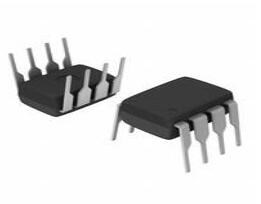 ATTINY25 8-Bit Microcontroller: DIP8 ATTINY25, Circuit and Programming
ATTINY25 8-Bit Microcontroller: DIP8 ATTINY25, Circuit and Programming11 January 20221913
 STM8S105xx 8-bit Microcontrollers by STMicroelectronics: Technical Overview
STM8S105xx 8-bit Microcontrollers by STMicroelectronics: Technical Overview29 February 202491
 TDA1517P Power Amplifier: Circuit, Replacement and Pinout
TDA1517P Power Amplifier: Circuit, Replacement and Pinout20 August 202118560
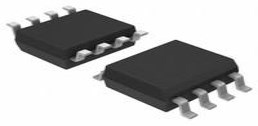 MC34063A Regulator: Application, Price and Pinout
MC34063A Regulator: Application, Price and Pinout23 August 20217553
 SI5347 Clock Generator: Features, Pinout and Datasheet
SI5347 Clock Generator: Features, Pinout and Datasheet18 April 2022884
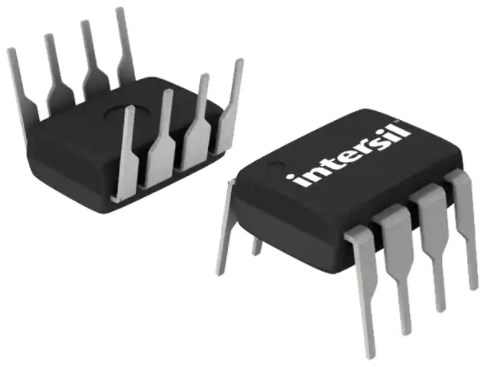 ICM7555IPAZ General Purpose Timers: Diagram, Pinout, and Datasheet
ICM7555IPAZ General Purpose Timers: Diagram, Pinout, and Datasheet15 February 20222051
 EP4CE6E22C8N Intel/Altera: Specifications, Features and Applications
EP4CE6E22C8N Intel/Altera: Specifications, Features and Applications25 March 2025452
 Cypress CY8C4024LQI-S401: A Comprehensive Technical Overview
Cypress CY8C4024LQI-S401: A Comprehensive Technical Overview29 February 202485
 Application of Wide Bandgap Devices in EV Converters
Application of Wide Bandgap Devices in EV Converters12 April 20231171
 Is ON Semiconductor's Stock Overvalued? A Detailed Analysis
Is ON Semiconductor's Stock Overvalued? A Detailed Analysis28 September 20231895
 Clock&Timing - Application Specific: A Dedicated Chip That Helps Produce Signals on the Circuit Board
Clock&Timing - Application Specific: A Dedicated Chip That Helps Produce Signals on the Circuit Board22 February 2023758
 Microcontroller (MCU) Market Analysis
Microcontroller (MCU) Market Analysis09 February 20224066
 Ceramic Capacitors vs Film Capacitors: A Comprehensive Comparison Guide
Ceramic Capacitors vs Film Capacitors: A Comprehensive Comparison Guide14 May 20252384
 SAW Filter: Introduction, Features and Applications
SAW Filter: Introduction, Features and Applications30 December 20208122
 Demand for Automotive Chips Will Surge 300%
Demand for Automotive Chips Will Surge 300%09 April 20223510
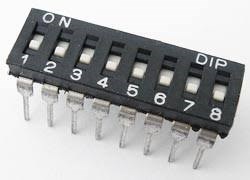 DIP Switch: Introduction and Classification
DIP Switch: Introduction and Classification20 January 202112371
ON Semiconductor
In Stock
United States
China
Canada
Japan
Russia
Germany
United Kingdom
Singapore
Italy
Hong Kong(China)
Taiwan(China)
France
Korea
Mexico
Netherlands
Malaysia
Austria
Spain
Switzerland
Poland
Thailand
Vietnam
India
United Arab Emirates
Afghanistan
Åland Islands
Albania
Algeria
American Samoa
Andorra
Angola
Anguilla
Antigua & Barbuda
Argentina
Armenia
Aruba
Australia
Azerbaijan
Bahamas
Bahrain
Bangladesh
Barbados
Belarus
Belgium
Belize
Benin
Bermuda
Bhutan
Bolivia
Bonaire, Sint Eustatius and Saba
Bosnia & Herzegovina
Botswana
Brazil
British Indian Ocean Territory
British Virgin Islands
Brunei
Bulgaria
Burkina Faso
Burundi
Cabo Verde
Cambodia
Cameroon
Cayman Islands
Central African Republic
Chad
Chile
Christmas Island
Cocos (Keeling) Islands
Colombia
Comoros
Congo
Congo (DRC)
Cook Islands
Costa Rica
Côte d’Ivoire
Croatia
Cuba
Curaçao
Cyprus
Czechia
Denmark
Djibouti
Dominica
Dominican Republic
Ecuador
Egypt
El Salvador
Equatorial Guinea
Eritrea
Estonia
Eswatini
Ethiopia
Falkland Islands
Faroe Islands
Fiji
Finland
French Guiana
French Polynesia
Gabon
Gambia
Georgia
Ghana
Gibraltar
Greece
Greenland
Grenada
Guadeloupe
Guam
Guatemala
Guernsey
Guinea
Guinea-Bissau
Guyana
Haiti
Honduras
Hungary
Iceland
Indonesia
Iran
Iraq
Ireland
Isle of Man
Israel
Jamaica
Jersey
Jordan
Kazakhstan
Kenya
Kiribati
Kosovo
Kuwait
Kyrgyzstan
Laos
Latvia
Lebanon
Lesotho
Liberia
Libya
Liechtenstein
Lithuania
Luxembourg
Macao(China)
Madagascar
Malawi
Maldives
Mali
Malta
Marshall Islands
Martinique
Mauritania
Mauritius
Mayotte
Micronesia
Moldova
Monaco
Mongolia
Montenegro
Montserrat
Morocco
Mozambique
Myanmar
Namibia
Nauru
Nepal
New Caledonia
New Zealand
Nicaragua
Niger
Nigeria
Niue
Norfolk Island
North Korea
North Macedonia
Northern Mariana Islands
Norway
Oman
Pakistan
Palau
Palestinian Authority
Panama
Papua New Guinea
Paraguay
Peru
Philippines
Pitcairn Islands
Portugal
Puerto Rico
Qatar
Réunion
Romania
Rwanda
Samoa
San Marino
São Tomé & Príncipe
Saudi Arabia
Senegal
Serbia
Seychelles
Sierra Leone
Sint Maarten
Slovakia
Slovenia
Solomon Islands
Somalia
South Africa
South Sudan
Sri Lanka
St Helena, Ascension, Tristan da Cunha
St. Barthélemy
St. Kitts & Nevis
St. Lucia
St. Martin
St. Pierre & Miquelon
St. Vincent & Grenadines
Sudan
Suriname
Svalbard & Jan Mayen
Sweden
Syria
Tajikistan
Tanzania
Timor-Leste
Togo
Tokelau
Tonga
Trinidad & Tobago
Tunisia
Turkey
Turkmenistan
Turks & Caicos Islands
Tuvalu
U.S. Outlying Islands
U.S. Virgin Islands
Uganda
Ukraine
Uruguay
Uzbekistan
Vanuatu
Vatican City
Venezuela
Wallis & Futuna
Yemen
Zambia
Zimbabwe













